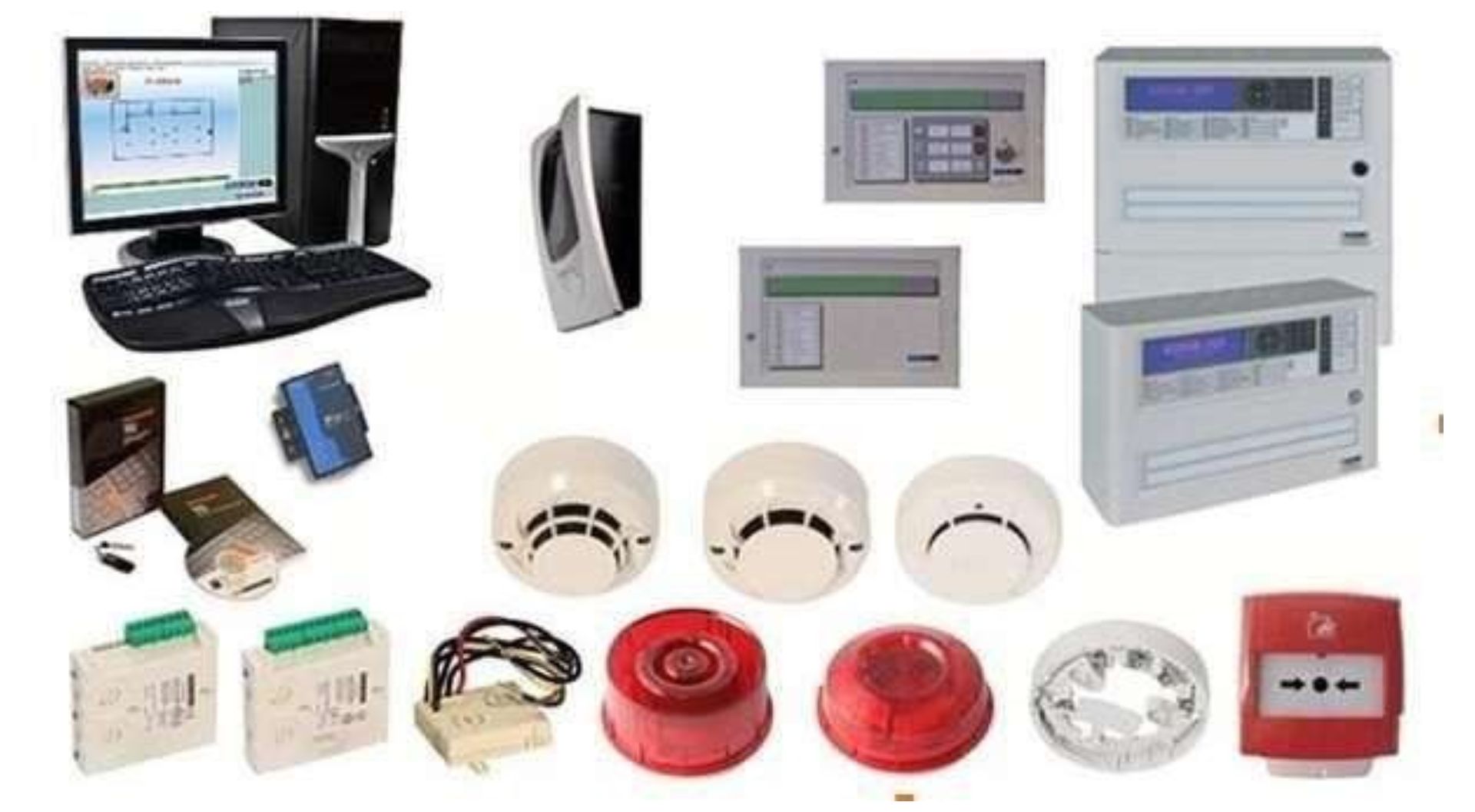Fire detection and alarm system
Fire Alarm System is designed to alert us to an emergency so that we can take action to protect ourselves, staff and the general public.
Fire alarms are found in Offices, Factories, and public buildings, they are a part of our everyday routine but are often overlooked until there is an emergency at which point, they might just save our lives. Whatever the method of detection is, if the alarm is triggered, sounders will operate to warn people in the building that there may be a fire and to evacuate.
The fire alarm system may also incorporate a remote signal system which could then alert the fire brigade via a central station. The “Brain” of the fire detector system is the Fire Alarm Control Panel. It is the central hub for all of the detector signals to be wired to and provides a status indication to the users. The unit can also be set up to simulate an alarm for use in routine Fire and evacuation drills, so all staff knows what action to take in the event of a real fire
Different Types of Fire Alarm Systems

Conventional

Addressable

Intelligent

Wireless
Conventional Fire Alarm Systems
In a Conventional Fire Alarm System, physical cabling is used to interconnect several call points and detectors, the signals from which are wired back to the main control unit.
Call points and detectors are arranged in “Zones” to simplify locating the cause of the alarm, this is important for both the fire brigade and general building management.
Each zone is indicated at the Fire Alarm Control Panel either with an indicator lamp, a text display or in some cases both.
It makes sense that the more we can divide a building into zones, the more accurate locating the alarm trigger will be.
The Control Panel is wired to a minimum of two sounder circuits which could contain bells, electronic sounders or other audible fire alarm devices.
It is these devices which sound the alarm when triggered.
Addressable Fire Alarm Systems
The detection principle of an Addressable System is the same as a Conventional System except that each detector is given a set Address (usually by means of a dip-switch) and the Control Panel can then determine exactly which detector or call point has initiated the alarm.
The detection circuit is wired as a loop and up to 99 devices may be connected to each loop.
It is common for the loop to be fitted with Loop Isolation Modules so that the loop is sectioned in order to ensure that a short circuit or single fault will only cause the loss of a small part of the system; allowing the rest of the system to function normally.
n the previous two systems, the “Conventional Fire Alarm System” and the “Addressable Fire Alarm System” the detectors are not considered “intelligent” as they can only give output signals representing the value of detected phenomena.
It is left up to the Control Unit to decide whether there is a fire, fault, pre-alarm or other.
Intelligent Fire Alarm Systems
However, in our next type of System, which is an Intelligent Fire Alarm system, each detector effectively incorporates its own computer which evaluates the environment around it and communicates to the Control Panel whether there is a fire, fault or the detector head needs cleaning.
Essentially Intelligent Systems are far more complex and incorporate far more facilities than Conventional or Addressable Systems. Their primary purpose is to help prevent the occurrence of false alarms.
Wireless Fire Alarm Systems
The final type of system we will consider is the Wireless Fire Alarm System.
These are an effective alternative to traditional wired fire alarm systems for all applications. They utilize secure, license-free radio communications to interconnect the sensors and devices with the controllers.
It is a simple concept, which provides many unique benefits and is a full intelligent fire detection system without the need for cabling.
In this article, we have learned that Fire Alarm systems are fitted in many buildings we encounter every day and that they are used to warn people within the building of an emergency fire-related situation.
Join Our Newsletter
Subscribe our newsletter to receive the latest news and exclusive offers every week

